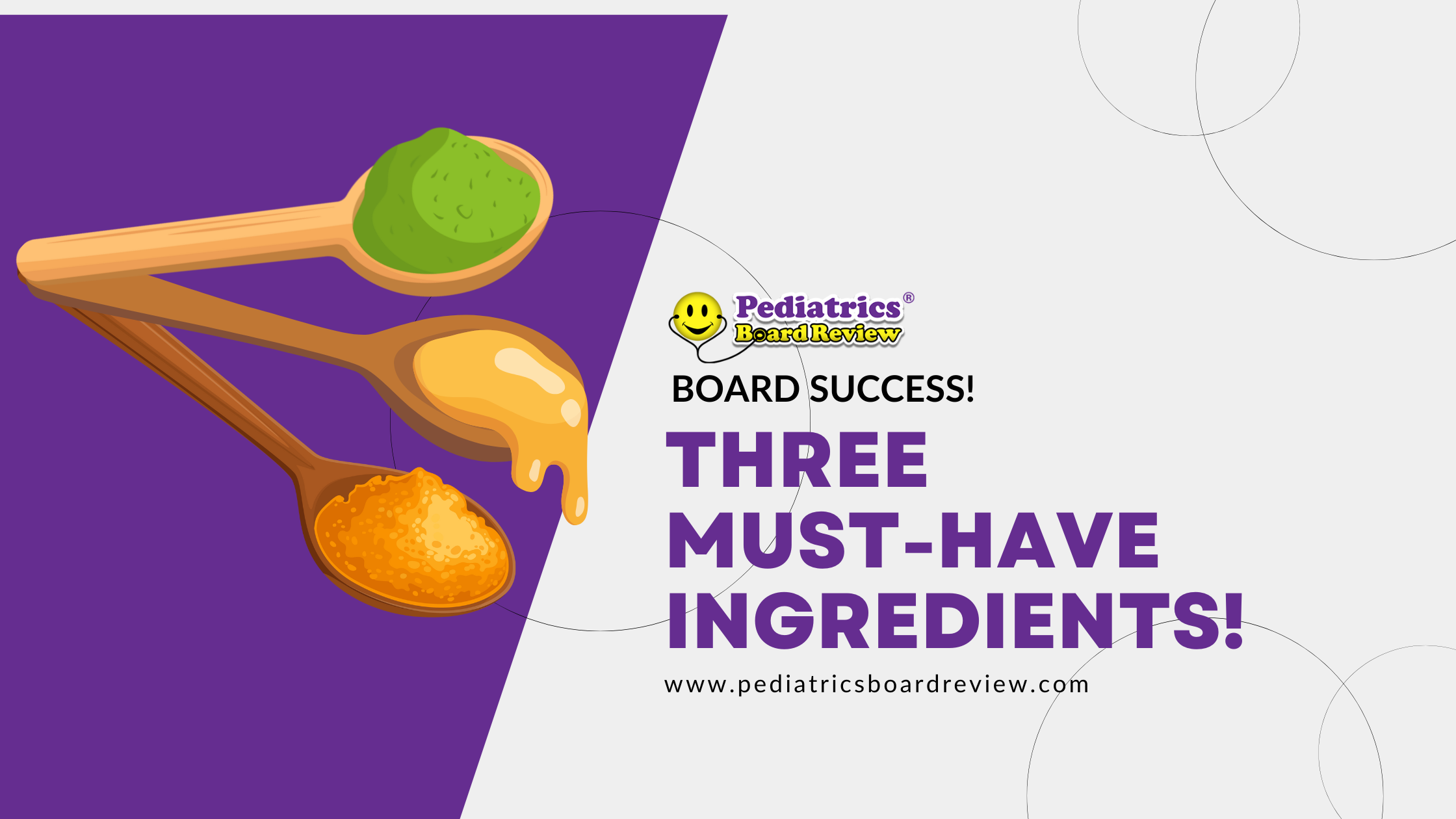Failed Pediatric Boards? Find Success with Our Blueprint
If You Failed the Pediatric Boards, It’s Time to Study Smarter (Not Harder) A failed pediatric boards attempt is devastating. Although I’m now the author of the Pediatrics Board Review (PBR) study guides, I failed the American Board of Pediatrics (ABP) initial certification exam the first time I took the boards. I know what you’re […]
Click Here And Continue Reading...Passing the Pediatric Boards – The 3 MUST HAVE Ingredients
Achieving success and passing the pediatric boards is difficult. But, with the right tools and efforts, it’s attainable. In this article, I’ll introduce you to the 3 main areas you must focus on to pass the boards. Without extensive studying, even a good pediatrician is at high risk of failing the boards. By the time […]
Click Here And Continue Reading...Passing the Pediatric Board Exam – Maximizing CRUNCH Time
When it comes to passing the pediatric board exam, all logic and reason can get thrown out the window during “crunch time.” In this article, I want to share some resources and tips to help you calm the nerves, help you focus on maximizing your chances at passing the pediatric boards and most of all… […]
Click Here And Continue Reading...Pediatric Board Exam Results for 2014
The Exam Results For 2014 Are In! I can’t believe the pediatric board exam results for 2014 are already here, and so early this year! Based on the emails I’m getting, it was a GREAT year to take the exam. Since I failed the first time I took the boards, I’m especially happy to hear […]
Click Here And Continue Reading...What Passing The Pediatric Boards Has Meant To Dr. Vincenzo
If Once You Don’t Succeed, Try 4 More Times? Passing the pediatric boards didn’t come easy to me. I’ve taken the pediatric boards 5 times. Most of us see the boards as just another step on the route to becoming a pediatrician. However, when you sit back and think about it, it’s amazing to realize […]
Click Here And Continue Reading...Dr. Vincenzo Finally Passed the Pediatric Boards!
Being the author of the PBR and interacting with so many pediatricians is really a blessing, but it also comes some heartache. I tend to have much more interaction with pediatricians that have failed the initial certification exam prior to finding PBR. Responding to all of those emails can be tiring, and often it’s just […]
Click Here And Continue Reading...

